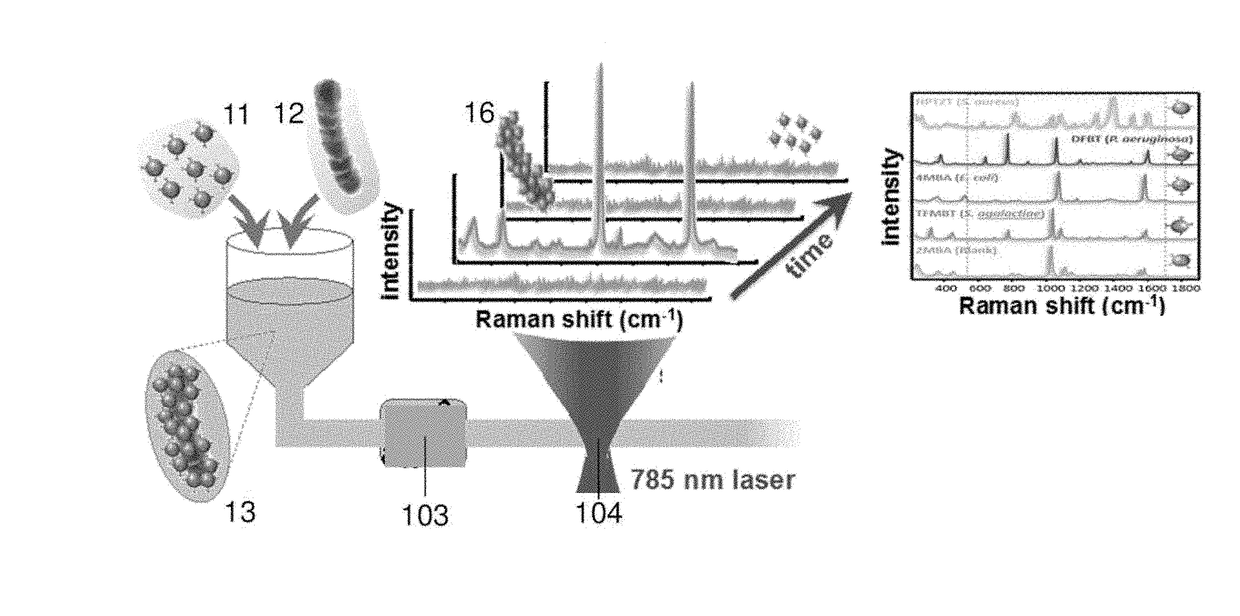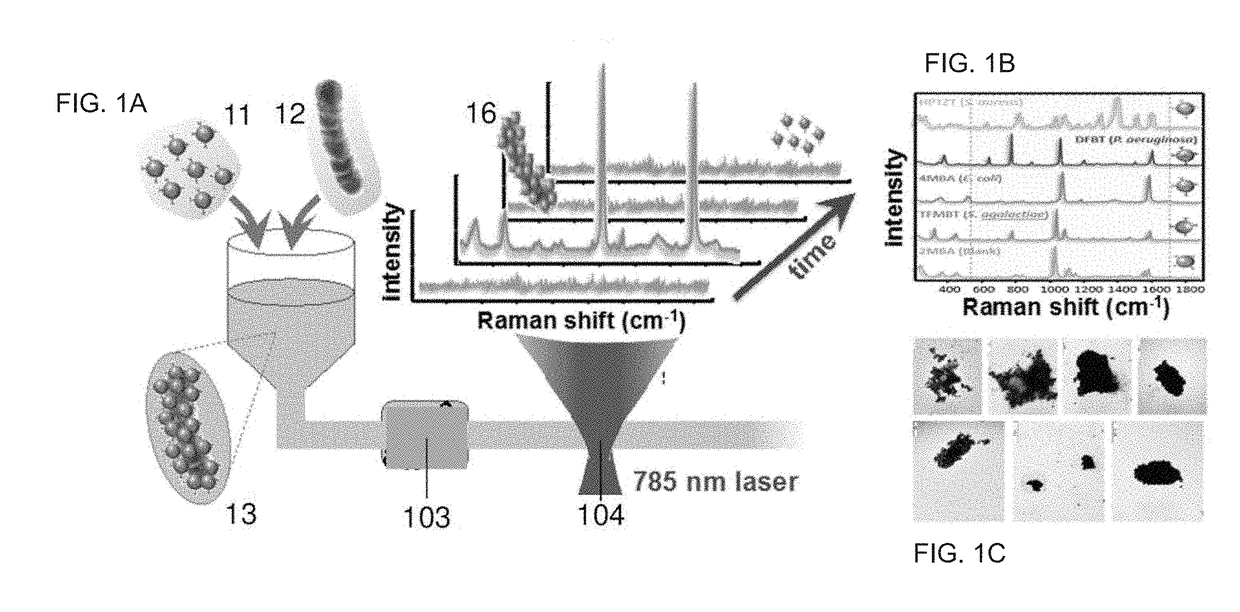Method for detection of presence or absence of analytes in fluids and an optical detection system for carrying out the method
- Summary
- Abstract
- Description
- Claims
- Application Information
AI Technical Summary
Benefits of technology
Problems solved by technology
Method used
Image
Examples
Embodiment Construction
[0008]The present invention has been developed for the purpose of providing a method for detection of presence or absence of analytes in fluids and an optical detection system for carrying out such method that solves the above-mentioned disadvantages, in addition contributing other additional advantages that will become clear from the description that is given below.
[0009]In the present document, the term “analyte” shall be understood as any biological entity to be detected and in the broadest sense this term refers to any substance with the capacity to bind to a ligand of the encoded and / or biofunctionalized nanoparticles. By way of non-limiting illustration, the term “analyte” includes eukaryotic and prokaryotic cells, including circulating tumoral cells, pathogenic and no pathogenic microorganism (i.e. fungi, protozoa, algae, rotifers, bacteria and archaea), viruses, nucleic acids, peptide nucleic acids, antigens, peptides and proteins, or the combination thereof.
[0010]In the sen...
PUM
 Login to view more
Login to view more Abstract
Description
Claims
Application Information
 Login to view more
Login to view more - R&D Engineer
- R&D Manager
- IP Professional
- Industry Leading Data Capabilities
- Powerful AI technology
- Patent DNA Extraction
Browse by: Latest US Patents, China's latest patents, Technical Efficacy Thesaurus, Application Domain, Technology Topic.
© 2024 PatSnap. All rights reserved.Legal|Privacy policy|Modern Slavery Act Transparency Statement|Sitemap



